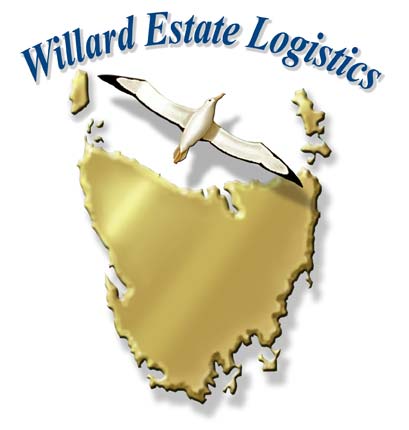Keith Wallis, Hong Kong - Thursday 19 June 2008
Cosco Container Lines has cut the speeds of its entire box fleet by 10%.
CHINA Ocean Shipping Co, China’s largest shipping company, has ruled out plans to launch a fleet-wide speed-reduction programme following the introduction of a similar initiative at its liner fleet. Cosco safety and technology director Chen Zhengjie confirmed to Lloyd’s List today that Cosco Container Lines has cut the speed of its entire box fleet by 10%. This includes ships operated through both the CYKH Alliance and its own services. But he said the scheme would not be extended to Cosco’s remaining fleet, which includes bulkers, tankers, heavy lift, general cargo, car carriers and specialist vessels. This is thought to be because these ships already operate at slower speeds of around 10 knots-13 knots, compared with boxships which average 22 knots-25 knots. He said the box ship fleet also used a higher percentage of bunkers, consuming about 65% of Cosco’s total bunker needs. Pointing to the success of the speed reduction scheme, Mr Chen said that Cosco saved nearly 30,000 tonnes of fuel in March. This comes as Coscon adds Prince Rupert in British Columbia to its North China-US southwest coast express (CEN) service with the Cosco Hong Kong, which will leave Dalian tomorrow. The new port rotation will be Dalian, Tianjin, Qingdao, Shanghai, Prince Rupert, Long Beach, Oakland, Yokohama and Shanghai. Coscon also plans to increase the size of its five boxships operated on the route from 5,400 teu-7,500 teu. At a presentation earlier this week, China’s transport ministry said Coscon, together with 19 other ports, shipping and logistics companies, were “exemplary” in their fuel saving initiatives. This comes as the ministry has set fuel saving goals for China’s entire maritime industry. Vice-minister of transport Gao Hongfeng said: "By 2010, we aim to reduce fuel consumption for trucks and ports by 5% and for ocean-going ships by 11%, based on 2005 figures.” The Shenzhen ports of Shekou, Chiwan, Yantian and Da Chan Bay have already launched campaigns to convert or replace rubber-tyred gantry cranes and other port equipment from diesel to electric power to improve operating efficiencies and air emissions. Mr Gao said the cuts would be “significant” for an industry that was responsible for 31.5% of China’s oil consumption in 2006. The cuts are also part of a country-wide campaign to cut energy consumption while shifting to greater renewable energy use.
Cosco Container Lines has cut the speeds of its entire box fleet by 10%.
CHINA Ocean Shipping Co, China’s largest shipping company, has ruled out plans to launch a fleet-wide speed-reduction programme following the introduction of a similar initiative at its liner fleet. Cosco safety and technology director Chen Zhengjie confirmed to Lloyd’s List today that Cosco Container Lines has cut the speed of its entire box fleet by 10%. This includes ships operated through both the CYKH Alliance and its own services. But he said the scheme would not be extended to Cosco’s remaining fleet, which includes bulkers, tankers, heavy lift, general cargo, car carriers and specialist vessels. This is thought to be because these ships already operate at slower speeds of around 10 knots-13 knots, compared with boxships which average 22 knots-25 knots. He said the box ship fleet also used a higher percentage of bunkers, consuming about 65% of Cosco’s total bunker needs. Pointing to the success of the speed reduction scheme, Mr Chen said that Cosco saved nearly 30,000 tonnes of fuel in March. This comes as Coscon adds Prince Rupert in British Columbia to its North China-US southwest coast express (CEN) service with the Cosco Hong Kong, which will leave Dalian tomorrow. The new port rotation will be Dalian, Tianjin, Qingdao, Shanghai, Prince Rupert, Long Beach, Oakland, Yokohama and Shanghai. Coscon also plans to increase the size of its five boxships operated on the route from 5,400 teu-7,500 teu. At a presentation earlier this week, China’s transport ministry said Coscon, together with 19 other ports, shipping and logistics companies, were “exemplary” in their fuel saving initiatives. This comes as the ministry has set fuel saving goals for China’s entire maritime industry. Vice-minister of transport Gao Hongfeng said: "By 2010, we aim to reduce fuel consumption for trucks and ports by 5% and for ocean-going ships by 11%, based on 2005 figures.” The Shenzhen ports of Shekou, Chiwan, Yantian and Da Chan Bay have already launched campaigns to convert or replace rubber-tyred gantry cranes and other port equipment from diesel to electric power to improve operating efficiencies and air emissions. Mr Gao said the cuts would be “significant” for an industry that was responsible for 31.5% of China’s oil consumption in 2006. The cuts are also part of a country-wide campaign to cut energy consumption while shifting to greater renewable energy use.




